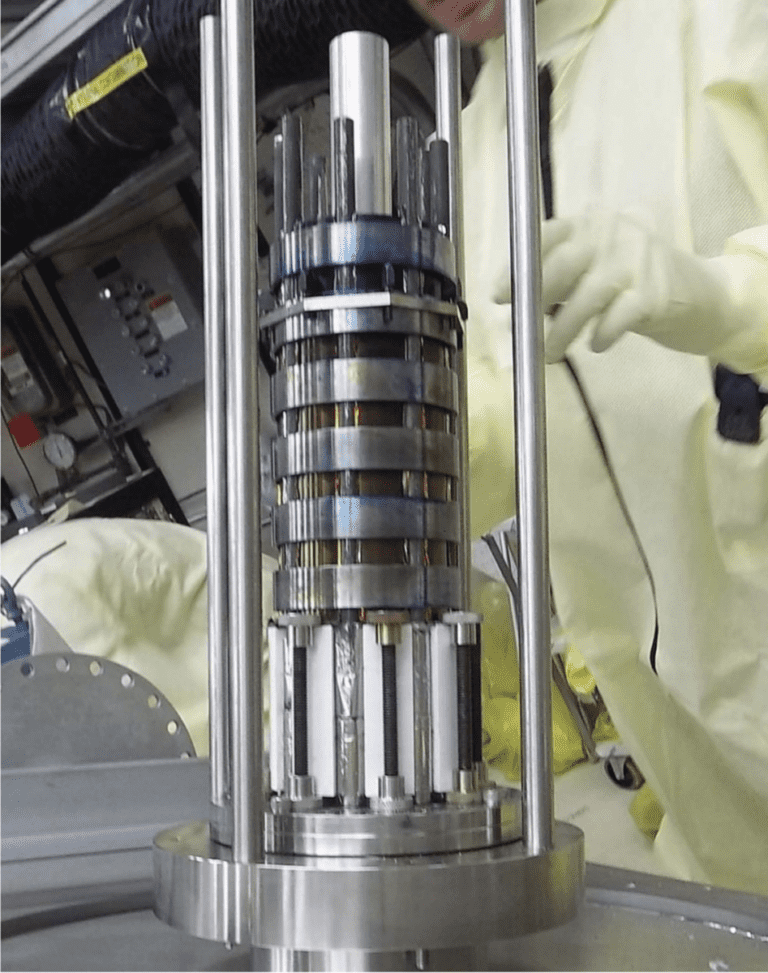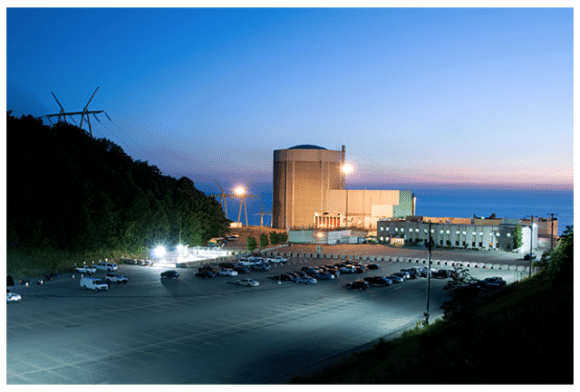Atomic Show #179 – The Forgotten Bomb
Bud Ryan is a documentary filmmaker who is deeply concerned that the world has forgotten about the fight against nuclear weapons. As part of his effort to remind people that there is still a need for activism in support of disarmament, he produced a film titled The Forgotten Bomb.
In it, he interviews a number of people who have been personally affected by nuclear weapons – the hibakusha (A-bomb survivors) in Japan, downwinders affected by testing programs, politicians concerned about international nonproliferation efforts, and activists who have invested their careers in efforts to force reductions in the numbers of weapons. On those topics, Bud and I came to a rough agreement, even though I am a former “boomer sailor.”
Unfortunately, like many people who become antinuclear activists because they are opposed to nuclear weapons, Bud has also been convinced that peaceful use of nuclear energy should also be avoided. He makes the false statement in his film that nuclear reactors have never turned a profit and he even interviews a few people who seem to believe that the only reason that we have developed nuclear medicine is because the government wanted to find something beneficial to do with nuclear materials.
On that topic, Bud and I strongly disagreed, but the conversation was interesting. Bud agreed that he would keep reading and learning and might even be willing to read some of the materials that I plan to send him about the real health effects of low level radiation and about the value of nuclear energy to enable people to live abundant lives.
(On that last one, I have a real challenge – Bud lives in a remote area of sun drenched New Mexico – 3 miles from the nearest phone line. He and his wife are quite comfortable living in a solar powered home that has a bank of deep-cycle lead acid storage batteries that they can make last for 4-5 days. They dislike air conditioning. I would bet that they never go water skiing or out for a Sunday drive – just for fun.)
The Forgotten Bomb is available on DVD. Even if you favor the use of nuclear energy, it is worth watching – if only to understand the arguments and emotions that you will face as an atomic advocate.
Podcast: Play in new window | Download (Duration: 1:00:14 — 27.6MB)
Subscribe: RSS





This was only Atomic Show that I had to listen to in stages. The depth of this person’s ignorance, and the obvious lack of research of the topic makes me wonder how he can arrogate himself the title of documentary filmmaker. You must have the patience of a saint, as I would have lost it with him in the first ten minuets.
Another book this clown should read is John Mueller’s Atomic Obsession: Nuclear Alarmism from Hiroshima to Al-Qaeda to get a little perspective.
Causation does not equal correlation…you know?
Completely agree with DV82XL regarding the podcast.
Thanks for your patience. Education is a tough business. It is interesting (frustrating) how people commit themselves to a concept without putting things in a factual framework.
Nuclear weapons are a wonderful thing. No longer can the old farts who send young men to fight and die for them believe that they are going to come out on top; they would be among the first to die.
No longer can anyone delude themselves that having a large, standing army will be of any use in the fight against another nuclear power.
No longer can a decisive victory be won against another nuclear armed nation.
It is a blessing that India and Pakistan have nukes.
Who did Saddam work for before he became a dictator? Who called Saddam “a bulwark against Iran”? Who bankrolled Saddam’s military build up? Who supported Saddam through his worst attrocities? Who gave him military intelligence to help him target nerve gas on Iranian troops? Who is constantly making military and economic threats against Iran? Iran desperately needs a nuclear deterrent. They are crazy if they are not working on one.
Thank you Rod, for enduring this converstion with a fellow New Mexican. One of the most profound statements in it was from you, the English major: “I gotta stop saying ‘you know.'”
Soylent, according to statements by their leadership, Iran isn’t looking for a nuclear “deterrent.” Do they just want parity with other nuclear (as in weapons) powers? Or do we take them at their word: “In October 2005, having become president, [Achmadinajad] called for a global jihad aimed at destroying the United States. ‘Is it possible for us to witness a world without America and Zionism?’ he asked. ‘You should know that this slogan, this goal, can certainly be achieved.'” Quoted by Amir Taheri in the NY Post, 9/23/07.
Well, that’s an ambiguous political statement, and for all I know something was lost in translation. But the word “goal” is pretty clear. To that goal, what? Some demonstrations?
I have no problem with the Persians and all those other ME countries mentioned getting nuclear power plants. In fact, I’d love it– for them and more of it for us. I have been actively (though very peripherally) involved in efforts to enable Middle Eastern countries (other than Iran) to that end. Energy is fungible, so the less oil they all burn for electricity, the better for my 10 mpg RV and retirement plans (I would like to see Montana).
As for the rest of your last paragraph, the rhetorical (I presume) questions illustrate how war (hot, cool or cold) is indeed hell. Do give the answers to your questions– you (again I presume) know them to your satisfaction. Then for each, answer the “why.”
Yours,
Going to zero, as the nuclear cognoscenti put it, is a deceptively simple notion; just about everyone who knows nuclear weapons agrees it would be wickedly difficult to achieve. That’s because it would require a sea change in a dizzying array of defense matters, ranging from core defense policies to highly technical weapons programs, to say nothing about changes needed to the concept of sovereignty itself.
Furthermore, since scientific and engineering knowledge cannot be expunged from mankind’s memory, the potential to build weapons will always exist. To fully grasp the political and military implications, consider what would have been involved had the great powers of the 19th century tried to abolish gunpowder.
The Nuclear Non-Proliferation Treaty, 40-odd years old now, has proved ineffectual in moving the world toward nuclear disarmament because it is untenable to many nations as it would leave the Great Powers with overwhelming superiority in conventional military forces. That is one of the biggest potential sticking points.
Totally aghast at this person’s scientific ignorance. Rod could have punched so many holes in this person’s argument but chose to be diplomatic.
First and foremost – I am from Southeast Asia. As far as many others and I are concerned over here, the atomic bombings of Hiroshima and Nagasaki were wholly justified. If it weren’t for the atomic bombings, I wouldn’t be here today.
My great-grandparents and great-grand-relatives were slaughtered by the unjustified and unprovoked Japanese invasion of Southeast Asia. My grandparents would have been slaughtered if the war had dragged on for even 2-3 more months.
To more than 50 million people in this region (back in 1945) who have suffered years and years at the ends of Japanese swords, and who have seen their relatives dumped in mass graves or beheaded at the road-sides on a daily basis during the Japanese occupation, the atomic bombings were definitely a peaceful use of nuclear power!
Every August, some of us would celebrate America’s nuclear attacks, grateful of the better fate that it had given us. This is the reality in Southeast Asia.
Anti-war and anti-nuke activists abroad will never understand this because you have never had millions of your population slaughtered continuously in the space of a few years in recent history. I never cease to get offended at some holier-than-thou anti-war activists’ mantra of “The United States is the only country who have ever used nuclear weapons in war”. So what, it was entirely justified. Without the atomic bombings, tens and millions more would have died in Southeast Asia. Thank you, USA, and God bless America. Seriously.
Secondly, if this guy had bothered to understand how nuclear weapons work, he would know right away why the radioactive fallout left behind by the atomic bombings of Japan were so potent. If I recall correctly, less than 2% of the fissile material in Little Boy fissioned, releasing the 10-15 kiloton explosive yield within microseconds. This resulted in the fissile mass being blown apart, thus the remaining 98% did not fission and was just scattered by the blast, and contributed greatly to the radioactive fallout.
A thermonuclear device, on the other hand, will not have such an effect because most of its explosive yield comes from the fusion of lithium deuteride. In the case of the Tsar Bomba test that he was referring to, if I’m not mistaken, the 2nd stage’s uranium tampers were replaced with lead, which reduced its yield to half of its theoretical maximum of 100 megatons. This in turn also greatly reduced its radioactive fallout, due to a reduced amount of uranium being scattered by the thermonuclear blast (but in any case, in an efficient thermonuclear device the uranium tamper would be completely fissioned by the fast neutrons anyway).
Thirdly, if he thinks that uranium mining is bad, he should come to Asia and visit Malaysia, India and China, where many varieties of metals and rare earths are being mined.
Malaysia used to be one of the biggest tin producers in the world. Tin mining produces thorium hydroxide tailings which are simply dumped in piles in the vicinity of the tin mines. The highly elevated radiation levels from these tailings resulted in increased leukemia incidences among the population nearby the mines. The thorium was never extracted or put to any better use.
China is the world’s biggest producer of rare earth materials that are used to produce solar panels and neodymium magnets for permanent magnet alternators that are used in wind turbines. Malaysia and India are also starting to mine phosphorus, neodymium and other such rare earths that are vital for “Renewable energy” devices.
Guess what, the mining of rare earths similarly produces large amounts of tailings with high concentrations of thorium and uranium based compounds. And, again, none of these thorium and uranium tailings are ever sequestered safely, and neither are they being put to good use!
The fact that such mining activities inadvertently results in the extraction of radioactive minerals should provide us with the stark reminder that radioactivity is natural. Radioactive isotopes are present everywhere in nature, and the Earth’s crust, mantle and core are full of it. There is nothing unnatural about radioactivity and radioactive materials. It is not a man-made phenomenon.
The best way to render these materials safe is to fission them in a nuclear reactor, which gives us immense benefits in terms of power output, heat output and beneficial radioisotopes for medical and industrial uses.
This is one angle that is rarely considered by anti-nuke pro-unreliable energy activists – the fact that renewable/unreliable energy sources rely on raw materials that are highly polluting and have radioactive by-products, which are orders of magnitude more poorly handled than the materials that are mined and processed for the nuclear power industry.
Fourth, his utter ignorance about Fukushima and radiomedicine. The use of radioisotopes for medical purposes far predates the discovery of controlled nuclear fission. There is no government subsidy or conspiracy in any way to promote radiomedicine for the purpose of advancing the nuclear energy industry. The benefits were so evident that quack “cures” such as thorium bath salts, radium-laced toothpaste and uranium ore imbued “Revigator” water flasks were all the rage in the 1930s. None of these were sponsored by the government or nuclear industry in any way whatsoever. The general public believed in the benefit of radioisotopes and opportunists capitalized on it.
Back then, cancer cells were killed with radium-laced needles that produced “radium emanation”, i.e. radon gas, which killed the cancer cells but seemingly left the healthy tissues unharmed. Radon gas is far more radioactive than the tritium and short-lived nitrogen isotopes released from the Fukushima reactors.
An alarmist news report of the Fukushima incident mentioned a scary figure of “1 BILLION BEQUERELS PER DAY” (sic) of radiation being “continuously released” by the damaged reactors.
Well, guess what, the radium needles that were used for treating cancer back in the 1930s had an activity rate of over 30 billion bequerels. That’s over 30 times the radioactivity of these large damaged reactors, but concentrated within a needle.
Fukushima’s radioisotope leakage is not even potent enough to kill cancer cells when you compare it with radium needles but as far as anti-nukes are concerned, the Fukushima incident has put millions at risk of cancer globally.
Sadly, most anti-nukes prefer to remain scientifically-ignorant for the sake of maintaining their personal biases against nuclear energy. But that doesn’t come as a surprise. What would be surprising, though, would be for anti-nukes to actually educate themselves in the facts and science of nuclear energy before they sound off.
“[T]he atomic bombings were definitely a peaceful use of nuclear power!”
Jae Senn,
That’s a profound sentence and I will quote you often. Thank you.
Excellent comment. BTW, they have a “Revigator” among other things at the USA’s National Atomic Museum in Albuquerque, New Mexico.
As an extension, there’s a video going around, something like “Timeline of Nuclear Weapons Testing” (I’m on dialup and can’t search for it very well here at home), that shows further use of this kind of nuclear power– the weapon. After those first three, many nuclear weapons were “popped” around the world, never (so far) again on cities or other population concentrations like battlefields and aircraft carriers.
Sure, we’ve had wars since 1945, but not on the scale (unless you count the Cold War and its surrogates) of WWI or WWII. Why? I believe it’s because of the nuclear weapons and people like Rod Adams (chief engineer at one time of USS Von Steuben) who helped deploy them, credibly, on standy.
Come to think of it, I last saw that video linked on Meredith Anguinne’s “Yes Vermont Yankee” in the context of where the Sr-90, Cs-137 and Pu-239 in the environment come from, i.e. measurably from weapons tests and especially not significantly from nuclear electricity generation:
http://yesvy.blogspot.com/2012/02/sunny-news-about-fish-and-vermont.html
Are you folks enjoying the prospects of Fukushima killing off everyone in Japan?
http://enenews.com/japan-tv-we-have-discovered-a-new-fact-about-hidden-dangers-at-reactor-4-theres-another-way-fuel-rods-can-be-damaged
Japan TV: We have discovered a new hidden danger at Reactor 4 — There’s another way fuel rods can be damaged (VIDEO)
@John
Please see https://atomicinsights.com/2012/05/debunking-the-fukushima-spent-fuel-fable.html
Another good article providing information that debunks your claptrap is
http://ansnuclearcafe.org/2012/05/16/spent-fuel-at-fukushima-not-dangerous/